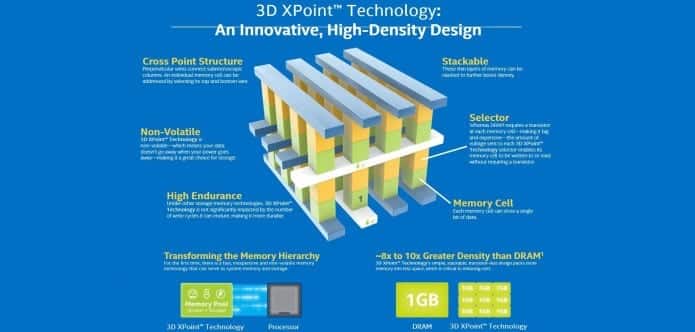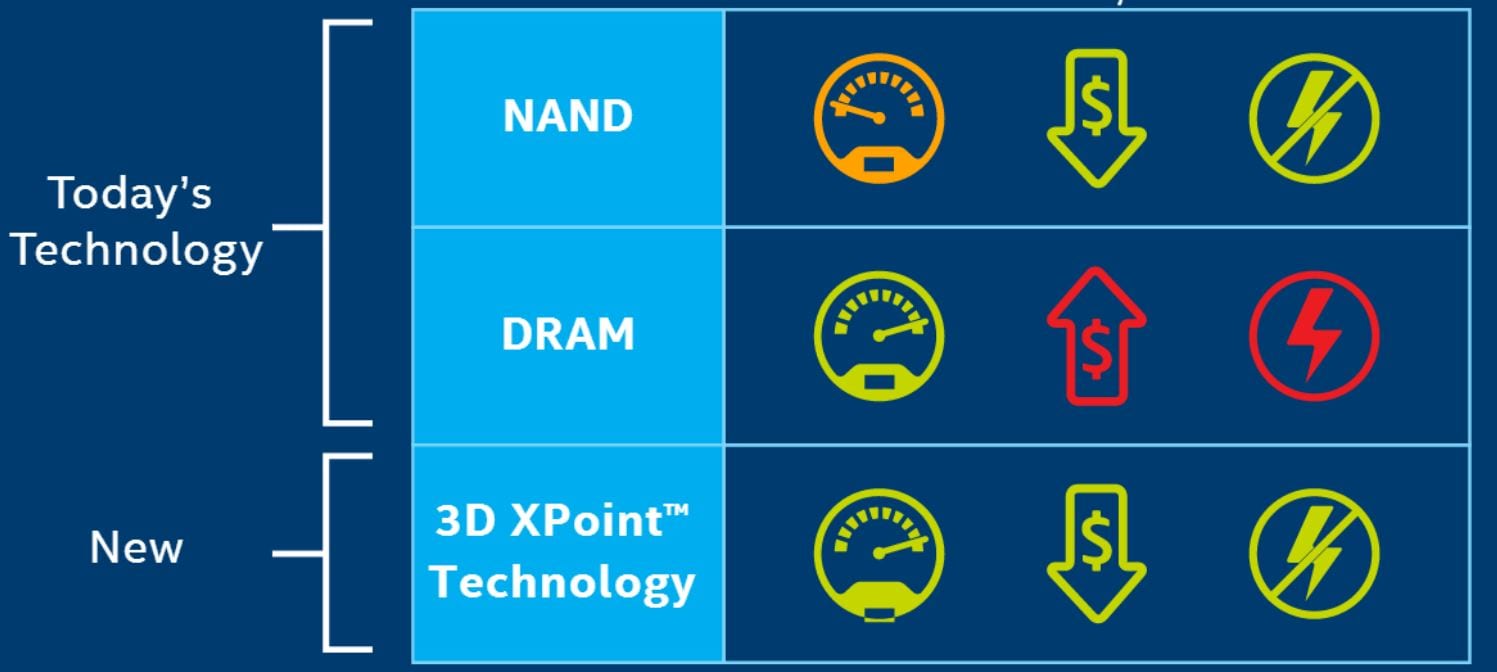Intel and Micron develop storage chip that is 1,000 times faster than current SSDs, non-volatile and works like RAM
Today, Intel and Micron announced their all-new memory technology called 3D XPoint (pronounced “cross-point”), a new kind of memory technology that is going into production and is up to 1,000 times faster than the NAND Flash storage used in memory cards and computers’ solid state drives (SSDs). In other words, it can be used both as system memory as well as nonvolatile storage. 3D XPoint can also be used to replace both a computer’s RAM and its solid-state drive (SSD).
From the time NAND flash was introduced in 1989, the companies claim that 3D XPoint is a major development in memory process technology, the first in the new memory category. Up to a thousand times faster (both in read and write speeds), it is said to be extremely fast and durable. It is also said to have higher withstanding power than existing NAND Flash memory that is currently being used in SSDs. Additionally, it also has 10 times greater density than conventional memory, which in turn results in much more storage capacity in the same physical space and remaining energy efficient and affordable at the same time as existing NAND Flash memory.
The new technology does not use transistors and it is not electron-based storage. It mainly depends only on a bulk material property change to substitute bits from a low-resistance to a high-resistance state.
NAND latency is measured in microseconds, and 3D XPoint technology latency is measured in nanoseconds (one-billionth of a second).
With a consumer-grade SSD writing 40GB/day for 5 years, an XPoint SSD could write 40TB/day for 5 years, basically making SSD endurance restrictions a thing of the past.
An XPoint memory chip will store 128Gbits (16GB), which means a 3D XPoint SSD will have the same capacity range as a current SSD using 128Gbit NAND chips that are 1 bit/cell, SLC, or single level cell NAND.
Rob Crooke, VP of Intel said in a statement that “For decades, the industry has searched for ways to reduce the lag time between the processor and data to allow much faster analysis. This new class of non-volatile memory achieves this goal and brings game-changing performance to memory and storage solutions.”
It is very clear that with its ultrahigh performance, 3D XPoint technology will improve the PC experience to a large scale, especially in gaming, as huge amounts of data can be loaded into the memory more rapidly. In addition, any applications that require low-latency storage will also derive advantage from 3D XPoint. In terms of technology, 3D Xpoint memory includes the characteristics of cross-point array structure, stackable, selector and fast-switching cell.
3D XPoint technology, which is now in production will be sampled later this year with selected customers. Based on the technology, Intel and Micron are developing individual products that are expected to be available sometime in 2016. Both of them have not decided on licensing the technology.


